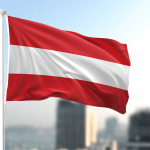Google Expands AI Mobility Tools Across Brazil, Cutting Fuel Use and Emissions

• Brazil’s major cities are adopting AI-based traffic and mobility tools that cut fuel use, emissions, and travel time.
• Rio de Janeiro’s deployment of Green Light is reducing unnecessary vehicle stops by an estimated 9% and fuel use by 15% at key intersections.
• A nationwide rollout of fuel-efficient routing helped 45 million users in September 2025, saving an estimated 2.1 million liters of fuel and cutting nearly 4,000 metric tons of emissions.
A rising testbed for AI-led mobility reform
Brazil has become one of the most active global laboratories for AI-driven transportation solutions as cities turn to digital tools to reduce congestion, emissions, and public costs associated with mobility inefficiencies. Google’s decade-long pursuit of climate-focused transport innovation is increasingly visible on Brazil’s streets, from the megacity of São Paulo to fast-growing regional capitals.
The company’s portfolio in the country includes fuel-efficient routing on Google Maps, Green Light, and the Environmental Insights Explorer (EIE). Together, these systems are shaping real-time commuting decisions, long-term transportation planning and, crucially, emissions outcomes. For local administrations working to align with national and municipal climate strategies, the appeal lies in tangible data and measurable performance.
Rio de Janeiro tests AI traffic optimisation
Rio was among the first global jurisdictions to pilot Green Light, an AI system that adjusts traffic light timing to cut unnecessary stops and ease gridlock. The city began adopting the solution in 2023, targeting intersections long characterised by heavy braking, idling, and erratic flow.
By September 2025, Green Light had expanded to three Brazilian cities, with an estimated 9% reduction in vehicle stops and a 15% cut in fuel use across 83 intersections. Google estimates these adjustments are preventing roughly 100 metric tons of greenhouse gas emissions per month. The technology’s impact is increasingly being viewed through both municipal budgeting and climate-accounting lenses, as fuel savings correlate with lower commuter costs and reduced urban air pollution.
Campo Grande turns data into planning directives
In Campo Grande, the emphasis is less on real-time optimisation and more on long-range planning. The city uses EIE to quantify transportation emissions and model future reductions. The tool draws from local mobility patterns to identify viable climate strategies, including what planners describe as “gerenciamento inteligente de tráfego”, a form of intelligent traffic management that prioritises non-motorised travel, safer intersections, and accessible public transit.
Officials have stated that EIE’s historical data allowed Campo Grande to establish measurable goals: cutting CO2 emissions by at least 5% and reducing average travel time by 15% on major corridors by 2026. The city now uses these baselines to track progress. The momentum is mirrored nationwide. Google reports partnerships with 108 municipalities, surpassing its original target of 100. Among them are São Luís, Teresina, Volta Redonda and Boa Vista, all integrating EIE into climate and urban-mobility planning frameworks.
São Paulo, Brasília and other metros shift daily habits
The country’s largest cities are also leveraging everyday features aimed at shifting individual behaviour. Alternative route suggestions within Google Maps highlight when walking or public transit is as fast, or faster, than driving. The tool focuses on nudging users toward lower-emissions choices without requiring substantial lifestyle changes.
In September 2025 alone, alternative route suggestions facilitated more than 188,000 shifts from driving to public transit or walking across São Paulo, Rio de Janeiro, Belo Horizonte and Brasília. Google plans to add more cities as data sets and user patterns deepen.
RELATED ARTICLE: Google Signs Largest Corporate Fusion Energy Deal
National impact and governance relevance
The broadest impact comes from fuel-efficient routing, which uses machine learning to guide drivers toward routes that minimise fuel consumption. Forty-five million users across Brazil used the feature in September 2025. Google estimates the resulting savings at 2.1 million liters of fuel and nearly 4,000 metric tons of avoided emissions.
The company’s methodology for estimating these reductions draws on real-world signals and third-party data. As stated in its early-2025 enabled emissions reduction principles, the aim is “to measure how our products help people and cities reduce greenhouse gases in credible and transparent ways”.
For policymakers and investors, the numbers point to a growing role for AI in mobility governance. Emissions reductions on this scale contribute directly to municipal and national climate strategies, reduce strain on public transport budgets, and improve city-level reporting for voluntary and regulated sustainability frameworks.
What global executives should watch
Brazil’s experience demonstrates how digital infrastructure can complement, rather than replace, physical investment in transit and road systems. The government’s interest aligns with wider Latin American priorities: lowering fuel expenditures, managing congestion, and preparing for climate-related reporting obligations.
The closing lesson is that incremental behaviour shifts—the kind prompted by a route suggestion or a smoother intersection—can add up to national-level change when adopted at scale. As countries weigh urban-mobility reforms in the run-up to global climate negotiations, Brazil’s model offers a real-time example of how city governance, consumer behaviour, and private-sector technology can converge to deliver measurable emissions gains.
Follow ESG News on LinkedIn












